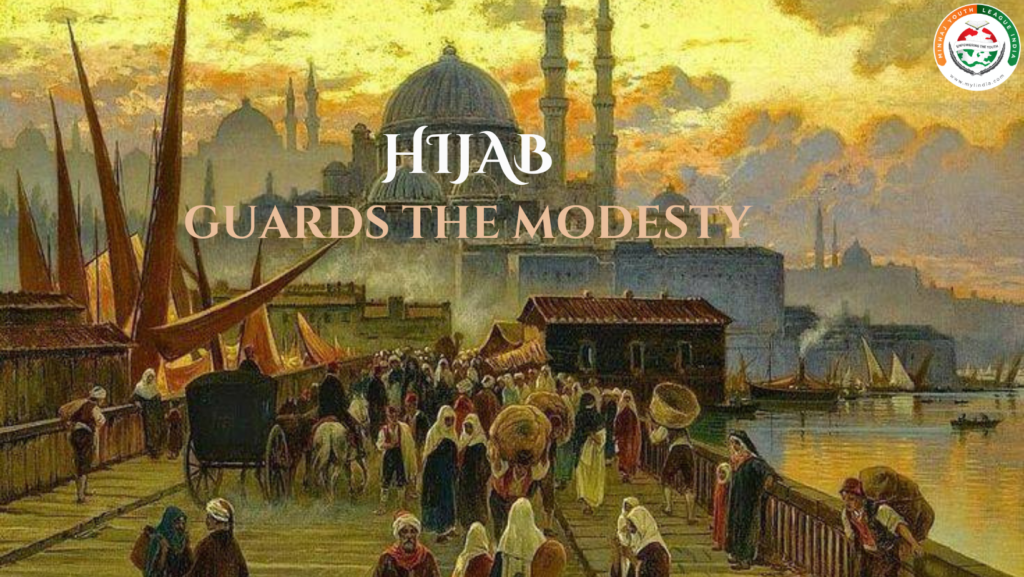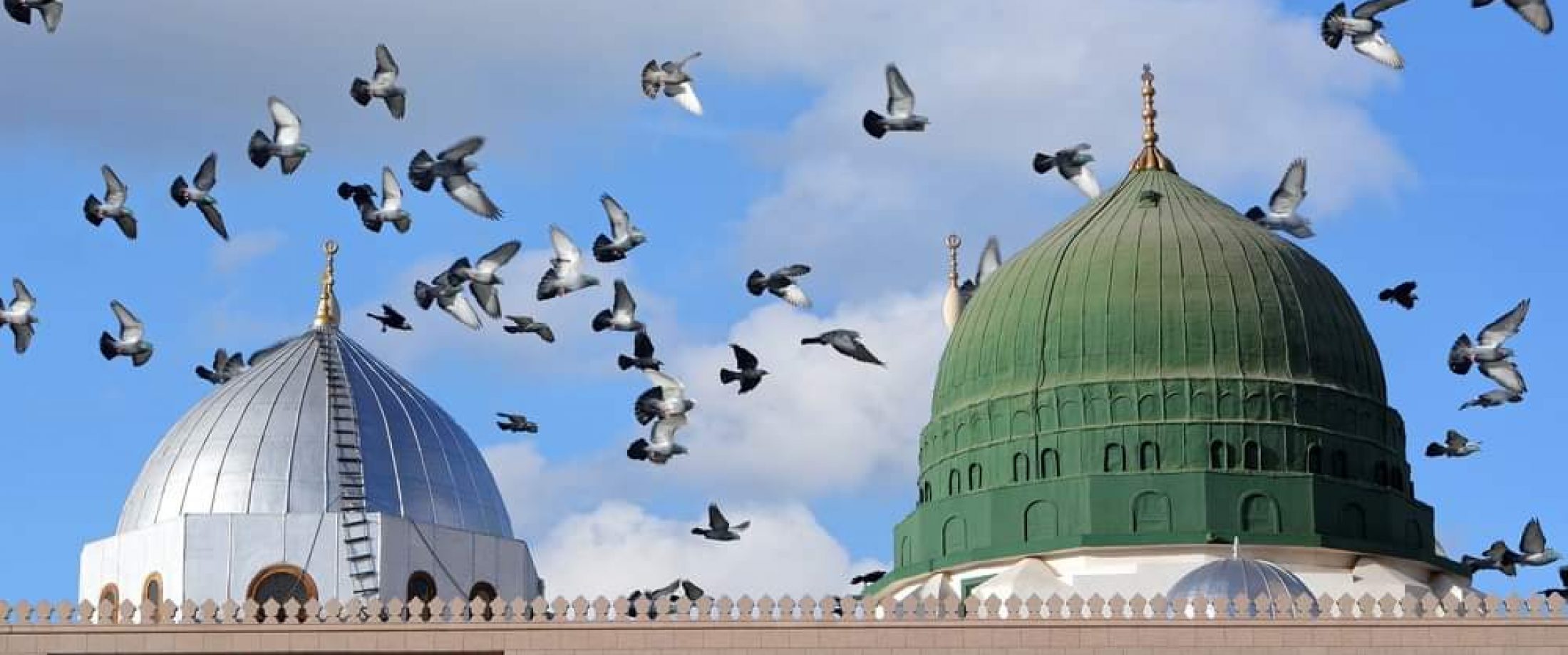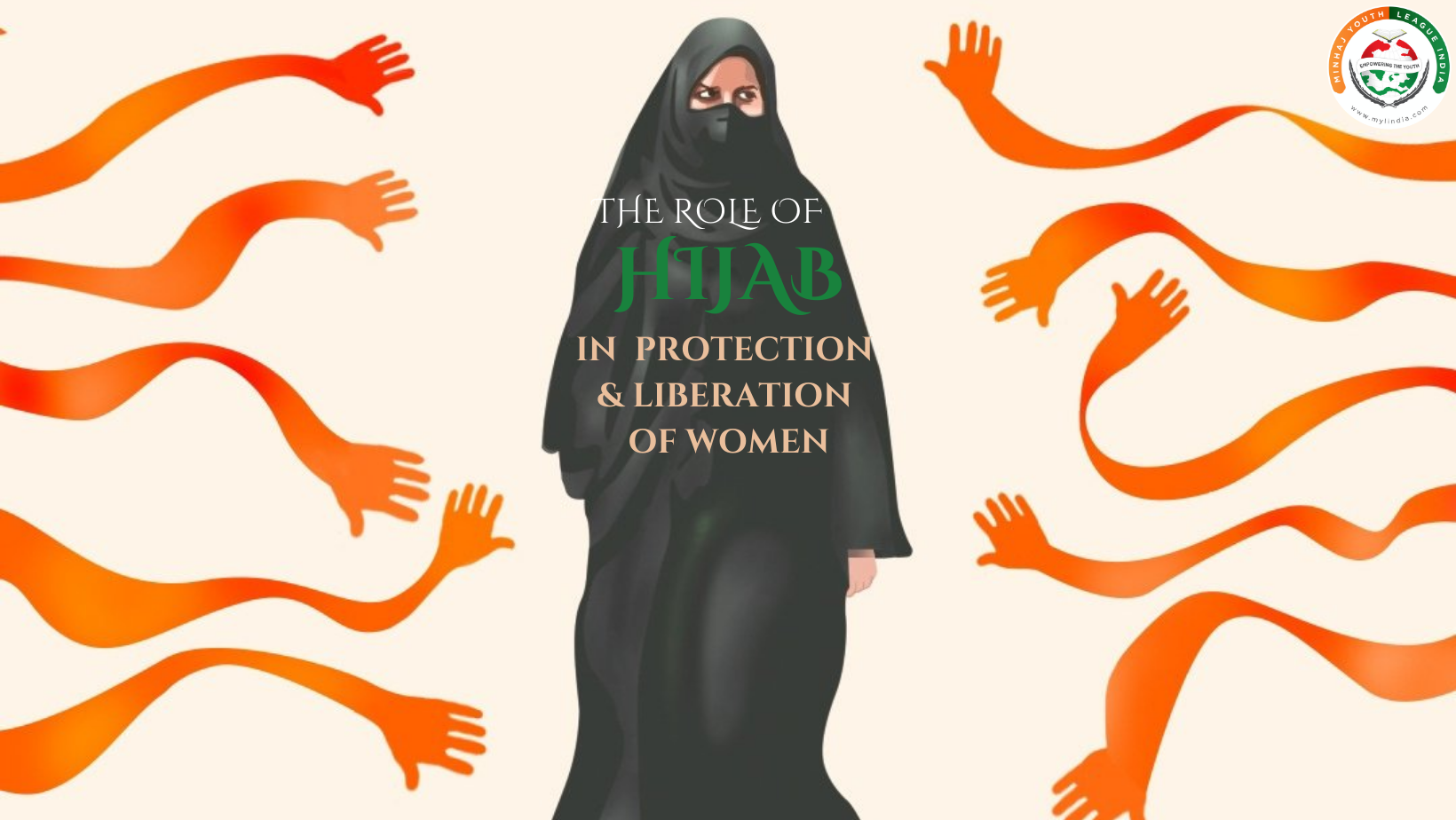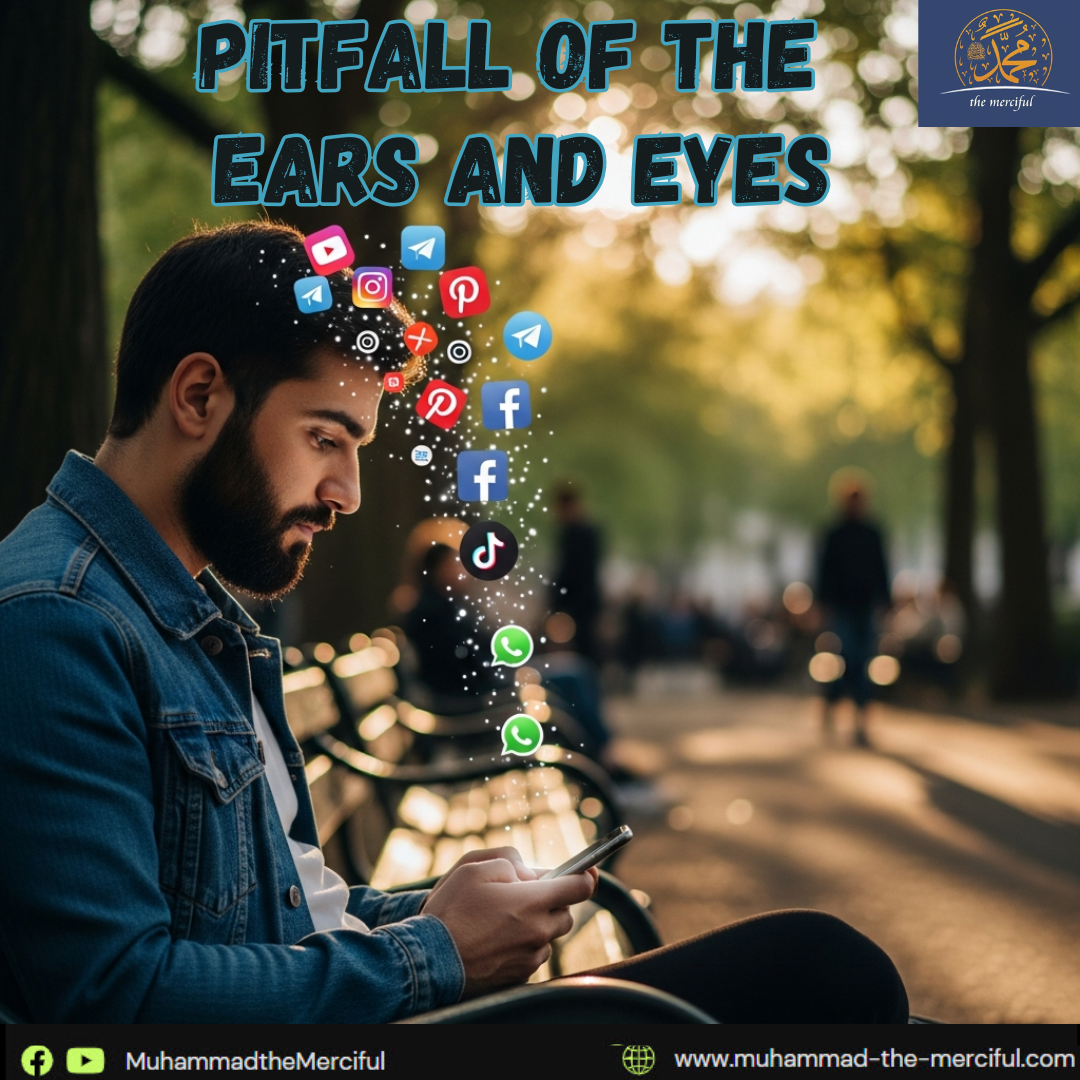One of the most discussed aspects in Islam in our times is the head covering of Muslim women i.e. Hijaab. Every Muslim girl, at some point in her life, will have been questioned as to why a Muslim woman must cover herself and is often looked upon as being constrained in her actions. Below is the reasoning behind the hijaab and its exact legal requirements. Muslim men are also required to cover themselves appropriately but its discussion is outside the scope of this article.
The Reasoning Behind the Hijaab
The first point to remember is that any act done by a Muslim is done for the pleasure of Allah (ﷻ). Since He is The Creator He knows what is best for His creation and what will suit their needs and requirements. The act of wearing the Hijaab is a commandment of Allah (ﷻ) . However, this does not mean we cannot inquire into the reasoning behind the commandment or ask for further explanations since this is what the Companions would do in the time of the Prophet(ﷺ).
It is strange that people criticize Islam for putting constraints on individuals regarding their clothing considering there are laws in most countries that set a certain standard of moral behavior regarding it. For example, there are laws in most countries prohibiting lewd behavior and Governments allow organisations to implement their own dress codes and rarely do people complain that employees are being oppressed.
Islam is no different as it too has a code of conduct, part of which is to specify respectable clothing. The only difference is that this law is different to the prevailing norm in society. Furthermore, it is the extent of modesty that is at the heart of the debate. When Islam puts constraints on attire, it is merely conforming to a standard that already exists within every society, with differences occurring only regarding the degree and extent. Just because a certain consensus has been achieved regarding clothing in one society can in no way justify that such a consensus precludes anything else as being permissible.
Another aspect of attire and dress is public and social pressure. There is no question that there is immense pressure for women to be beautiful, slim and attractive. A woman is judged more on her outer beauty than her mind, knowledge and intellect. Islam does not negate beauty neither does it consider celibacy as a pious act, rather it is practical. Islam lays down rules and regulations so that beauty and sexual relations are permitted but within a framework so that overall society and in particular women are not disadvantaged or discriminated as a result of the desires of others.
In fact the hijaab is a liberating force, since it allows women to partake fully in society by providing them with confidence and self-assurance in the knowledge that whether she is slim or large, beautiful or ugly (in the eyes of others), her hijaab will provide protection. Hijaab gives a woman respect and dignity since it signifies her esteemed status in the eyes of men who are naturally more inclined to treat a woman with dignity and value than one who chooses to expose herself and then complains when eyes wander!
The remaining article will thus focus on the Islamic concept of hijaab and its legal requirements.

The Hijaab
The word hijaab is derived from the Arabic root word of hajaba, which means to hide from view or to conceal. Many people assume it means headscarf alone, but hijaab is an entire way of dressing behaving and believing a concept to be adopted by both men and women. Moreover the best type of hijab, is not so much the physical one but the state of mind, pertaining to the inner self.
Allah(ﷻ) states: “We have also provided you an inward dress (as well and that is) the dress of Allah(ﷻ)’s fear (which) is the best” [7:26].
This is reference to Taqwa which is having God consciousness through the remembrance of Allah (ﷻ) , knowing He is always watching. Because having this belief is the best deterrent and protection from the vices of society.
Islam has no fixed standard as to the style of dress or type of clothing that Muslims must wear, but some requirements must be met. The Quran states in Surah Al-Nur, (24:31):“And direct the believing women that they (too) must keep their eyes lowered and guard their chastity, and must not show off their adornments and beautification except that (part of it) which becomes visible itself. And they must keep their veils (and head-coverings) drawn over their chest and breasts (too), and must not display their adornments (to anyone) except their husbands, or their fathers or the fathers of their husbands, or their sons or the sons of their husbands, or their brothers or the sons of their brothers or the sons of their sisters, or (the women of) their (own faith, the Muslim) women or their female slaves or such male servants as are free from any lust and sexual urge, or the children who (being minor) have (yet) no sense of women’s private parts. (They too are exceptions.) Nor must they (while walking) strike their feet (on the ground in such a manner that ornaments jingle and) thus get revealed and known which they are keeping hidden (under the command of Shari’a)…”
So from this verse the requirements of the hijaab can be divided into the categories below.
Lower your Gaze
Islam appreciates that there is a natural inclination between the sexes and that opposites, in terms of gender do attract.
Lowering the eyes is more of a symbolic act which trains the heart. If men and women need to talk and communicate with each other, making eye contact is part of the communication process but they should not convey something through the eyes that will be considered over friendliness.
It is reported by Jarr (RA) that “I asked the Prophet ( ﷺ) what I should do if I happened to cast a look at a woman by chance? The Prophet ( ﷺ) replied, “Turn your face away”.
However, there are exceptions to this rule such as considering a marriage proposal.

Guard your Modesty
The second requirement concerns guarding one’s modesty. As stated earlier hijaab includes the way you behave in public, your manners and social etiquette too. Social interaction is also regulated which means that men and women are not allowed to form intimate/sexual relationships outside of marriage.
The Prophet (ﷺ) said: “Beware that you do not call upon women who are alone”.(Bukhari).
A man and woman can only have one lawful relationship: marriage.
Some argue that this is unduly restrictive. However, if one studies the realities of life, most relationships between couples normally fall foul of the very things Islam wants to achieve. Married couples often break up due to extra-marital affairs which normally begin when men and women mix freely.
In addition, women are asked not to talk to men in a soft and beautiful manner but in a business-like manner, to avoid any misapprehensions on behalf of the man.(Quran 33:32). They are also asked to walk and behave in a modest way so that they do not attract attention (Quran 24:31).
Not Display your Ornaments Except what Appears Ordinarily
The next condition concerns not displaying ones beauty and ornaments except that what appears ordinarily. This is clarified further from a Hadith of the Prophet ( ﷺ) where: Ayesha (RA) reported that Asmaa (RA) came to the Messenger of Allah ( ﷺ) while wearing thin clothing. He ( ﷺ) approached her and said: “O Asmaa! When a girl reaches the menstrual age,it is not proper that anything should remain exposed except this and this. He pointed to the face and hands.” (Sunan Abu Dawood).
In Hanafi Fiqh (one of four schools of jurisprudence within Sunni Islam) jurists permit the exposure of the feet for women. Furthermore the clothing must also be loose enough so as not to reveal the shape of the body. In another verse of the Qur’an (33:59) women are asked to draw their cloaks or veils over their bodies so that their clothes are hidden and the shape of the body is not revealed. The word jalabib is used which is taken from the word jilbab meaning a thing that hides and conceals.
Draw a Veil over your Body
The next requirement is that a woman must draw her veil over her body including her chest. The Arabic word used for veil in the Qur’anic verse is khumur, and is the plural of the word khimar. Ibn Kathir defines the khimar as something that covers and explains that the khimar was used by the women of that time to cover their heads.
Imam Abu Abdullah Qurtubi: “Women in those days used to cover their heads with the khimar, throwing its ends upon their backs. This left the neck and the upper part of the chest bare, along with the ears, in the manner of the Christians. Then Allah (ﷻ) commanded them to cover those parts with the khimar.”
From the above we can see that women wore the khimar in a style that covered only the hair. Allah’s (ﷻ) commandment meant drawing the ends of the khimar forward and fastening it to foreheads, ears, necks, and upper chests as well as the hair. In essence what is termed as the modern day headscarf is in reality the khimar.
In respect of covering the face, although there are some Muslim scholars who believe it is mandatory for women to wear the niqab, this is not the majority view who state it is an optional act.
The Mahrem
The final part of the verse lists people in front of whom a woman can uncover her hair and does not need to wear the outer garment.
These are the: Husband, Father, Husband’s Father (father-in-law), Sons, Husband’s sons, Brothers or Brother’s sons, Sister’s sons, Women, Slaves right hand posses, Male servant free of physical desire and Children.
Thus it can be concluded that Islam emphasizes modesty and chastity as beautiful traits, and ones that should be encouraged in society for the betterment of the individual and the community as a whole.
*The mentioning of slavery in the Quran (24:31), does not mean that Islam or the Quran propagated slavery rather it was a cultural evil outdating Islam. At the beginning of Islam it was impossible to abolish slavery outright because it was a worldwide market regulating the economy of the time. However what the Quran and the Prophet ( ﷺ) brought was the gradual eradication of slavery by attacking its roots, such as granting slaves rights, promoting equality amongst humans and placing the act of freeing a slave as a good action. Thus in Islam eliminating slavery took on a reformative plane.
For further clarification please refer to the lectures of Shaykh-ul-Islam Dr. Muhammad Tahir-ul-Qadri (Al-Hidayah series 2007)




